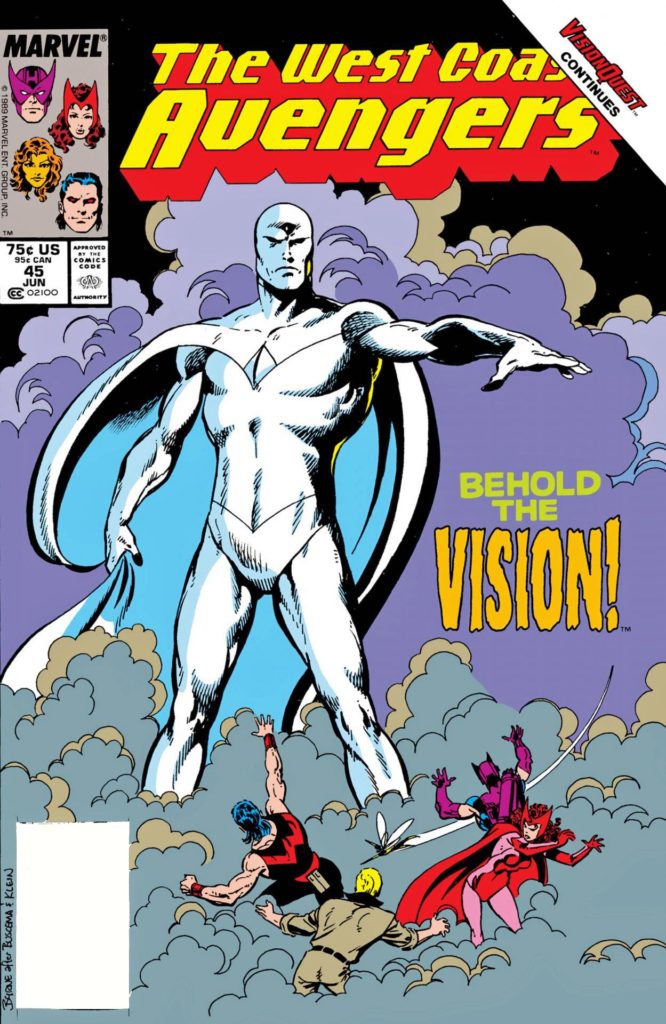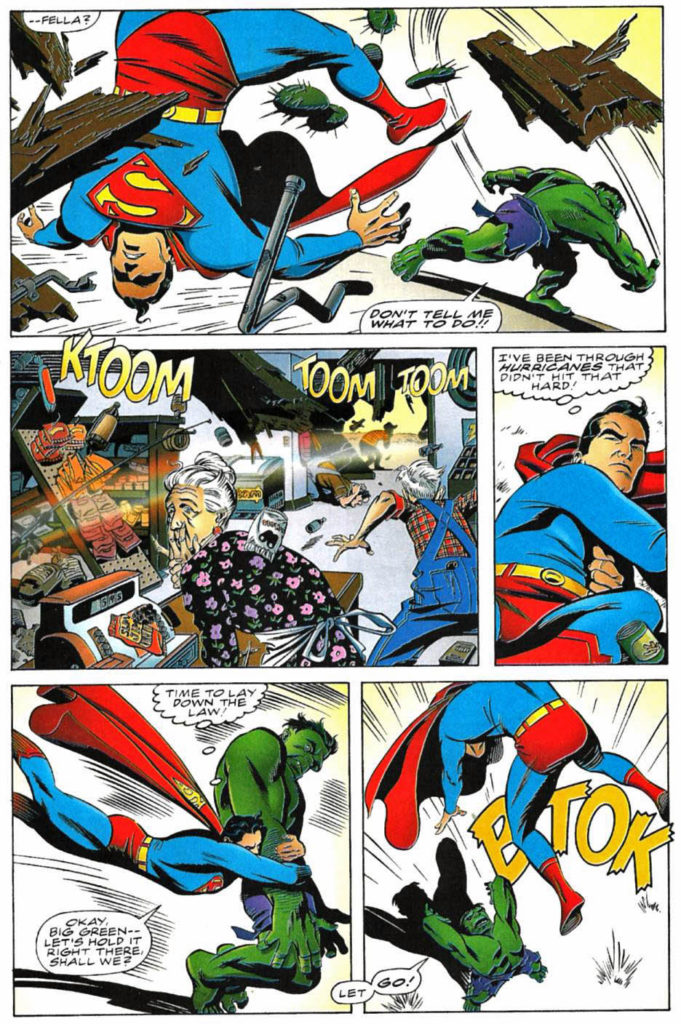John Byrne — WandaVision
West Coast Avengers #42, March 1989
John Byrne takes over The West Coast Avengers with a storyline entitled “Vision Quest.” The Vision is missing — the government is secretly reverse engineering him — and when it’s all done, we witness the introduction of the “White Vision.”
Sound familiar? Many of these ideas and threads (and of course many, many others) appear in Disney’s WandaVision.
Byrne makes the visual most of an exposition page here. (The dreaded “talking heads” scenario.) Nearly all of the Avengers are represented, and John uses multiple angles (medium vs. close-up shots) and characters’ points of view to keep the page visually interseting.
Nice detailed inks from Mike Machlan, who used a very fine line — much easier to discern in the original art than in the printed page.
I don’t recall how often we caught a glimpse of the full exterior of the West Coast headquarters, but it reminds me of a Santa Monica luxury hotel.
California Dreamin,’ indeed.










































